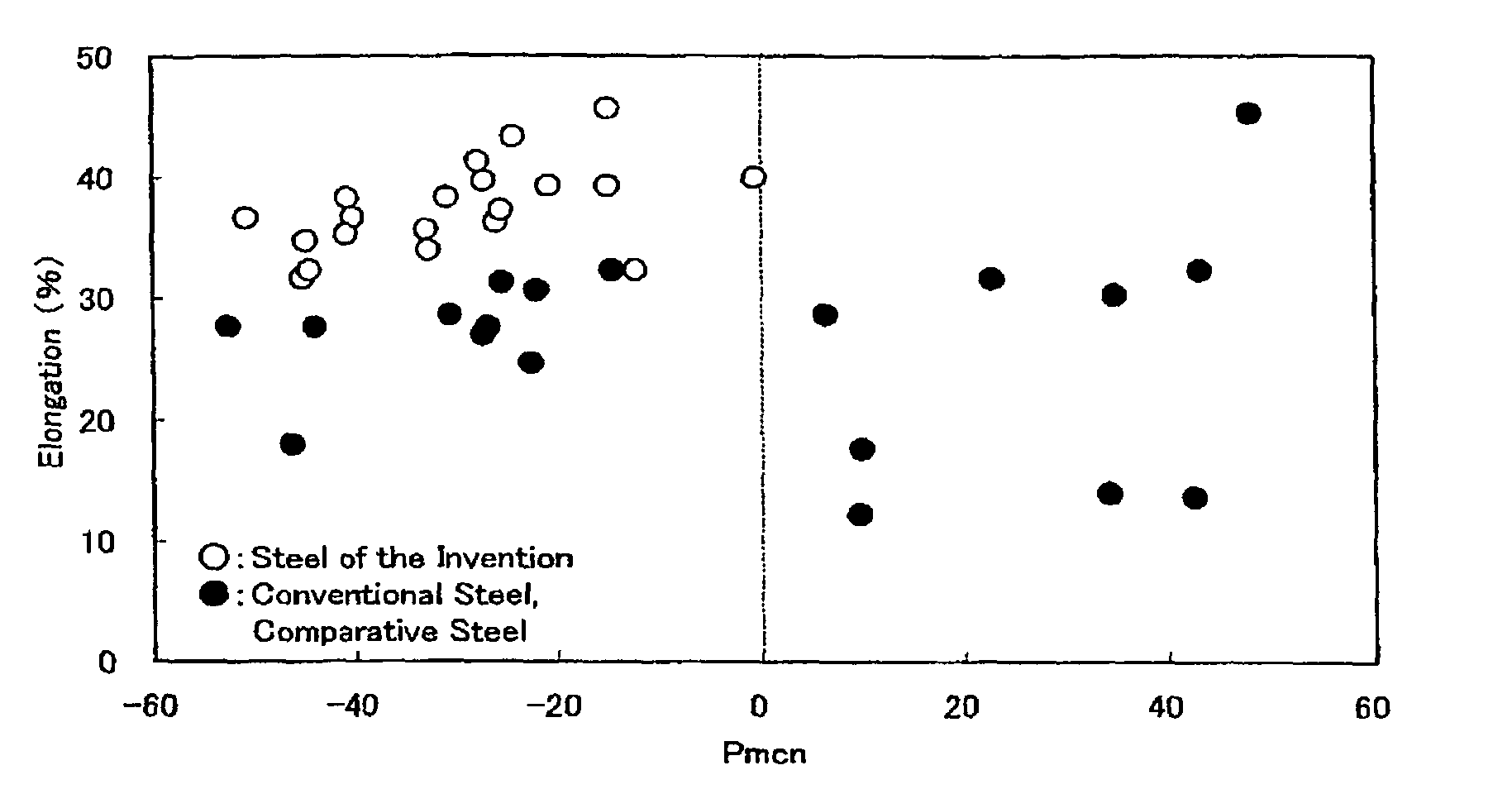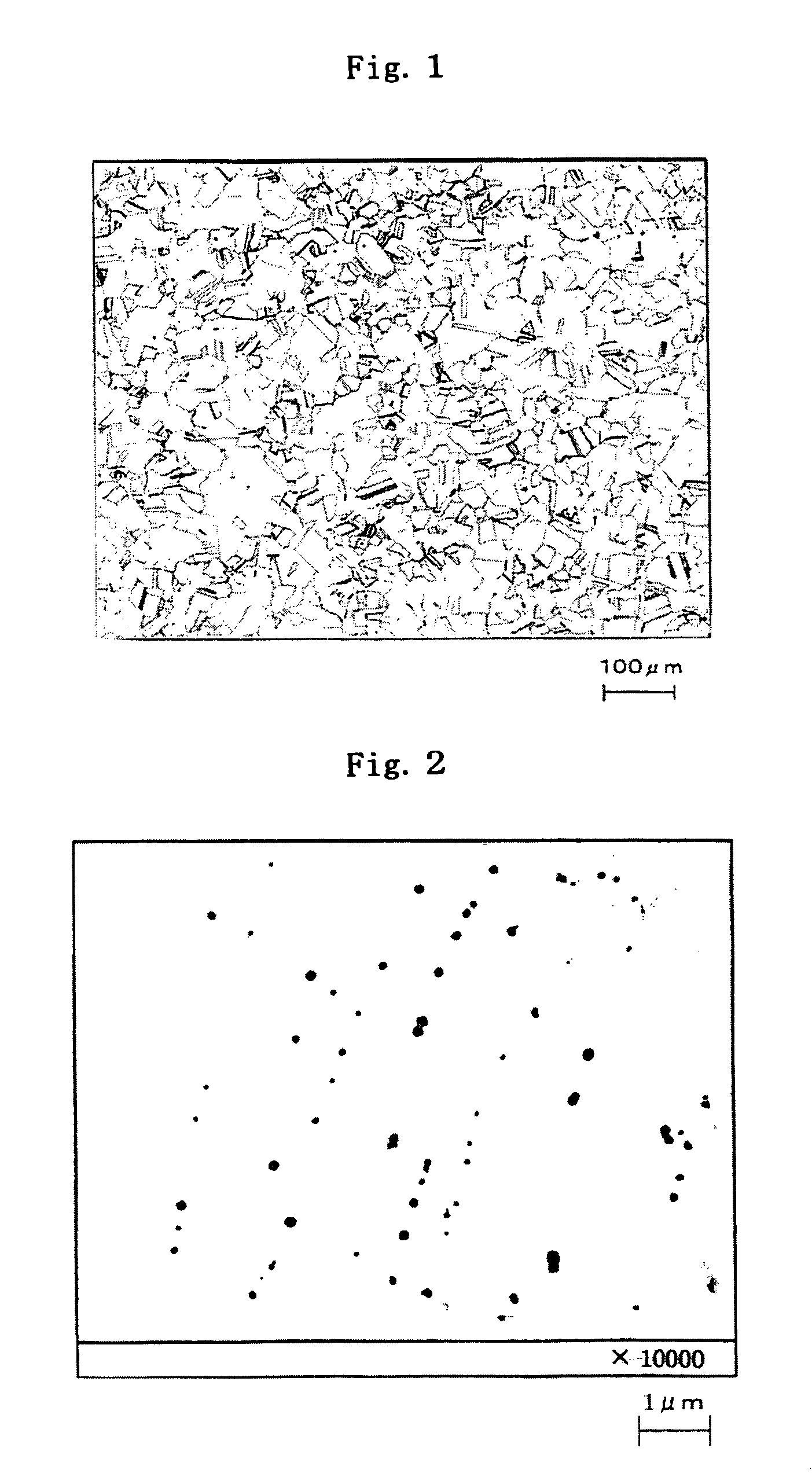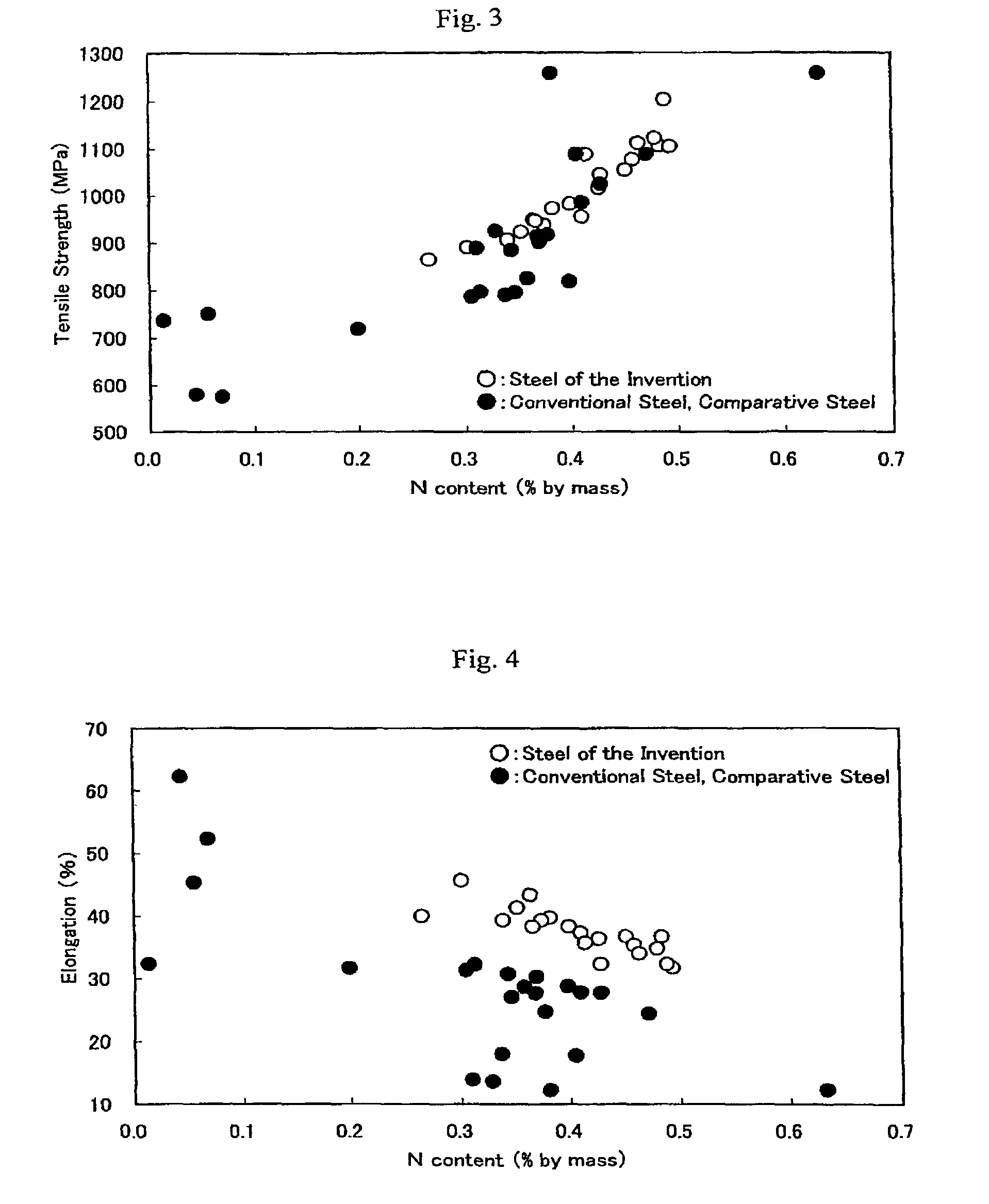Stainless steel for high-pressure hydrogen gas
a technology of hydrogen gas and stainless steel, which is applied in the direction of manufacturing tools, welding/cutting media/materials, and manufacturing tools, etc., can solve the problems of toxic methanol, shortening the maximum range of use, and achieving the effect of superior mechanical properties and corrosion resistan
- Summary
- Abstract
- Description
- Claims
- Application Information
AI Technical Summary
Benefits of technology
Problems solved by technology
Method used
Image
Examples
example 1
[0147]Chemical compositions (% by mass) of austenitic stainless steels, according to the present invention are shown in Table 1, and those of conventional steels and steels for comparison are shown in Table 2. For indicating whether each chemical composition satisfies the relationship [1] or not, the values of “Pmcn=2.5Cr+3.4Mn−300N” are also given. When Pmcn is not larger than 0 (zero), the relationship [1], namely “2.5Cr+3.4Mn≦300N”, is satisfied.
[0148]The steels having the respective compositions specified in Table 1 and Table 2 were melted by using a 150-kg vacuum induction-melting furnace, and made into ingots. The ingots were then soaked at 1,200° C. for 4 hours, and hot-forged at 1,000° C. or above to produce plates, 25 mm in thickness and 100 mm in width. The plates were then subjected to a solution treatment for 1 hour at 1,000° C., followed by water-cooling. The plates were used for test specimens.
[0149]FIG. 1 is an optical photomicrograph of the steel of the present inven...
example 2
[0164]Base metals M1 and M2, having the respective chemical compositions specified in Table 5, were melted in a 50-kg vacuum high-frequency furnace and then forged to produce 25-mm-thick plates, which were subjected to heat treatment by maintaining at 1,000° C. for 1 hour, followed by water cooling. The plates were used for test specimens. Similarly, alloys W1, W2, Y1 and Y2, having the respective chemical composition specified in Table 5, were melted in a 50-kg vacuum high-frequency furnace and then worked into wires with an outer diameter of 2 mm to produce welding materials. For weldability evaluation, welded joints were made in the manner mentioned below and subjected to evaluation tests.
[0165]The plates of 25 mm thick, 100 mm wide and 200 mm long were provided with a V groove with an angle of 20 degrees on one side. Pairs of such plates identical in composition were butted against each other, and welded joints were produced by multilayer welding in the grooves by the TIG weldin...
PUM
| Property | Measurement | Unit |
|---|---|---|
| yield strength | aaaaa | aaaaa |
| yield strength | aaaaa | aaaaa |
| grain size | aaaaa | aaaaa |
Abstract
Description
Claims
Application Information
 Login to View More
Login to View More - R&D
- Intellectual Property
- Life Sciences
- Materials
- Tech Scout
- Unparalleled Data Quality
- Higher Quality Content
- 60% Fewer Hallucinations
Browse by: Latest US Patents, China's latest patents, Technical Efficacy Thesaurus, Application Domain, Technology Topic, Popular Technical Reports.
© 2025 PatSnap. All rights reserved.Legal|Privacy policy|Modern Slavery Act Transparency Statement|Sitemap|About US| Contact US: help@patsnap.com



